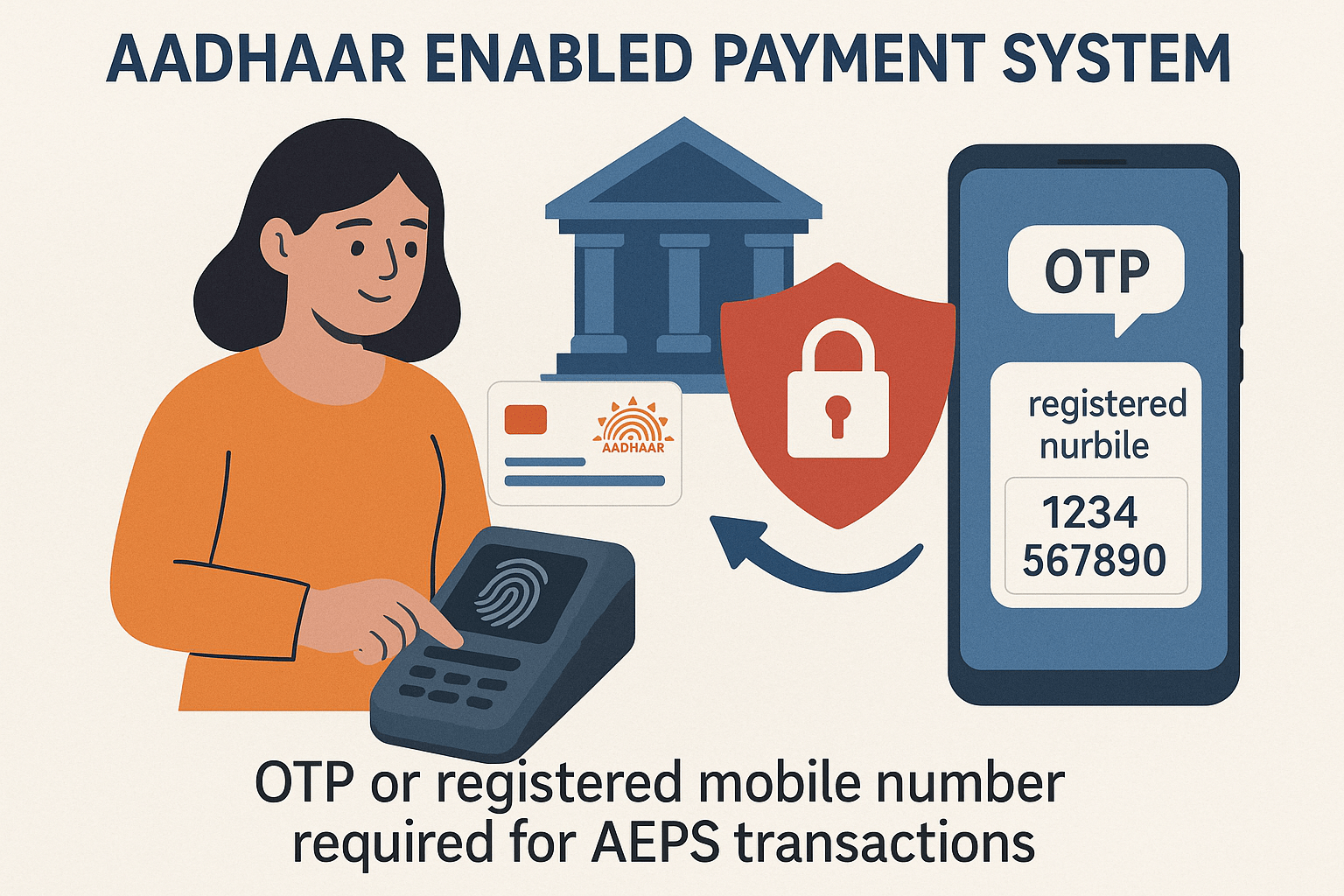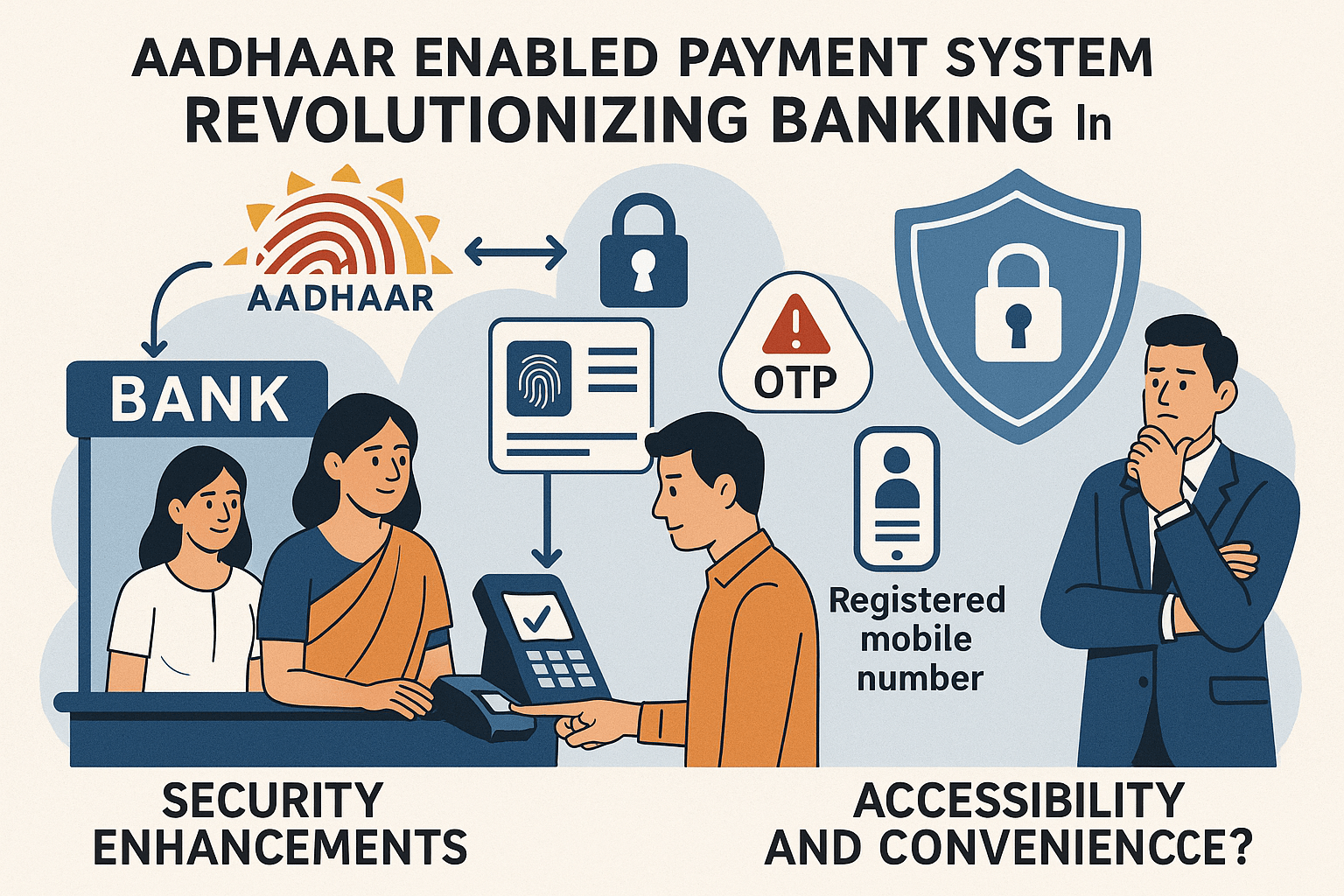The Aadhaar Enabled Payment System (AEPS) has revolutionized banking (precautions) in India, enabling seamless transactions using just an Aadhaar number and biometric authentication. However, to enhance security, many banks are now requiring OTP or registered mobile numbers for AEPS transactions. This move aims to reduce fraud but also raises questions about accessibility and convenience for users.
In this article, we’ll explore why banks are implementing this change, how it affects customers, and what precautions you should take to safeguard your transactions.
Why Are Banks Introducing OTP/Registered Mobile for AEPS?
1. Rising Fraud Cases in AEPS
AEPS transactions, while convenient, have been exploited by fraudsters. Unauthorized withdrawals using stolen biometric data or Aadhaar details have led to financial losses. By adding OTP or registered mobile verification, banks add an extra layer of security, ensuring only the legitimate account holder can authorize transactions.
2. RBI’s Push for Stronger Authentication
The Reserve Bank of India (RBI) has been advocating for multi-factor authentication in digital banking. Since AEPS previously relied solely on biometrics, introducing OTP or mobile verification aligns with RBI’s security guidelines.
3. Preventing Aadhaar-Linked Frauds
There have been cases where fraudsters manipulated AEPS by linking victims’ Aadhaar to unauthorized bank accounts. Requiring a registered mobile number ensures that only the genuine account holder can initiate transactions.
Which Banks Are Requiring OTP or Registered Mobile for AEPS?
Several major banks in India have already implemented this security measure, including:
-
State Bank of India (SBI)
-
HDFC Bank
-
ICICI Bank
-
Punjab National Bank (PNB)
-
Axis Bank
Smaller regional banks and payment service providers are also gradually adopting this policy.
How Does OTP/Registered Mobile Verification Work in AEPS?
Previously, AEPS transactions only required:
-
Aadhaar number
-
Biometric (fingerprint/iris) authentication
Now, with the new security measure, the process includes:
-
Biometric Authentication (as before).
-
OTP Verification (sent to the registered mobile number).
-
Transaction Approval only after both steps are completed.
This ensures that even if someone has your Aadhaar and biometric data, they cannot withdraw money without access to your registered mobile number.

Precautions to Keep Your AEPS Transactions Secure
Since banks are requiring OTP or registered mobile in AEPS, users must take extra precautions:
1. Ensure Your Mobile Number is Linked to Your Bank Account
-
Visit your bank branch or use net banking to verify and update your registered mobile number.
-
If your number changes, update it immediately to avoid transaction failures.
2. Never Share OTPs with Anyone
-
Banks or government officials will never ask for your OTP.
-
Fraudsters may pose as customer care executives—stay alert.
3. Monitor Your Bank Transactions Regularly
-
Check your account statements frequently for unauthorized transactions.
-
Enable SMS alerts for real-time updates.
4. Use Secure Networks for Banking
-
Avoid using public Wi-Fi for AEPS transactions.
-
Prefer UPI or net banking for added security layers.
5. Report Suspicious Activity Immediately
-
If you notice any unauthorized AEPS transaction, report it to your bank and National Cyber Crime Portal (https://cybercrime.gov.in/).
Challenges with OTP-Based AEPS Transactions
While the new security measure is beneficial, it also brings some challenges:
-
Limited Access for Rural Users: Many rural customers lack smartphones or stable mobile networks, making OTP-based transactions difficult.
-
Dependence on Mobile Networks: Poor connectivity can delay or fail OTP delivery.
-
Increased Steps for Transactions: Some users may find the additional step cumbersome.
Banks are working on alternative solutions, such as offline OTP methods or USSD-based approvals, to address these issues.

Future of AEPS: What to Expect?
With increasing digital fraud, banks requiring OTP or registered mobile in AEPS is likely to become a standard practice. Future enhancements may include:
-
Biometric + OTP + PIN for high-value transactions.
-
AI-based fraud detection to flag suspicious AEPS activities.
-
Offline authentication options for users in low-network areas.
Frequently Asked Questions (FAQs)
1. Can I still use AEPS without a registered mobile number?
No, most banks now mandate a registered mobile number for OTP verification in AEPS.
2. What if I don’t receive the OTP?
Check your mobile network, ensure your number is updated with the bank, or contact customer support.
3. Is AEPS safer than UPI?
Both have security measures, but AEPS with OTP adds an extra layer compared to biometric-only authentication.
4. How can I update my mobile number for AEPS?
Visit your bank branch or use net banking/mobile banking to update your registered mobile number.
5. Can someone misuse my Aadhaar for AEPS fraud?
Not easily, as they would need both biometric data and access to your registered mobile for OTP.
Final Thoughts
The move by banks requiring OTP or registered mobile in AEPS is a necessary step toward securing digital transactions. While it may add a slight inconvenience, the benefits of reduced fraud far outweigh the drawbacks.
By following the precautions mentioned—keeping your mobile number updated, never sharing OTPs, and monitoring transactions—you can safely continue using AEPS without worries.
Stay informed, stay secure!
Disclaimer
This article is for educational purposes only. If you have any concerns regarding the content, please refer to our DMCA policy for post removal requests. Always verify banking procedures with your financial institution before making transactions.
